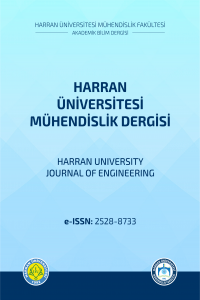Serbest Düşüş Deneyi İçin Bir Deney Cihazı ve Mobil Kontrol Uygulamasının Tasarımı ve Gerçeklenmesi
Serbest düşüş, Bluetooth ile mobil kontrol, Deney cihazı, Fizik
Design and Implementation of an Experiment Device for Free Fall Experiment with Mobile Control Application
Free fall, Mobile control with Bluetooth, Experiment device, Physics,
___
- [1] Ali, A., (2014), "The effect of inquiry-based learning method on students' academic achievement in science course." Universal Journal of Educational Research, 2014, Vol 2(1), pp 37-41
- [2] Conrad, D., Hedin, D., (2008) "The impact of experimental education on adloescent development." Child & Youth Services, 1982, Vol 4(3-4), pp 57-76, DOI:10.1300/J024v04n03_08
- [3] Ferreira, A., Seyffert, A. S., Lemmer, M., (2017) "Developing a graphical tool for students to understand air resistance and free fall: when heavier objects do fall faster." Physics Education, 2017, Vol 52(3), pp 1-9, DOI:10.1088/1361-6552/aa65da
- [4] Chiaverina, C. and Vollmer, M., (2005) “Learning physics from the experiments.” In: Informal Learning and Public Understanding of Physics: Third International GIREP Seminar, Ljubljana, Slovenia, September 5-9
- [5] Subali, B., Rusdiana, D., Firman, H., Kaniawati, I., Ellianawati, E., (2017) “Computer-based experiment of free fall movement to improve the graphical literacy.” Indonesian Journal of Science Education, 2017, Vol 6(1), pp 41-48, DOI:10.15294/jpii.v6i1.8750
- [6] Akgün, D., Çankaya, İ., (2003) "Bilgisayar kontrollü serbest düşme deney sisteminin tasarımı." Sakarya University Journal of Science, 2003, Vol 7, pp 31-36, DOI:10.16984/saufbed.91270
- [7] Vogt, P., Kuhn, J., (2012) “Analyzing free fall with a smartphone acceleration sensor.” The Physics Teacher, 2012, Vol 50(3), pp 182-183, DOI:10.1119/1.3685123
- [8] Walker, J., Halliday, D., Resnick, R., (2008) “Fundamentals of Physics (8 Edition Extended). John Wiley & Sons, Inc., pp 122, 330-338, 808, 805-806
- Yayın Aralığı: Yılda 3 Sayı
- Başlangıç: 2016
- Yayıncı: Harran Üniversitesi
Mono ve Multi Split Klima sistemlerinin Ömür Boyu Maliyet Analizi
Emrah KARA, Mehmet Azmi AKTACİR, Mehmet KUŞ
Şehir Planlaması İçin Sanal Gerçeklik
Fred ERNST, Halil İbrahim ŞENOL, Songül AKDAĞ, Öskan BARUTCUOGLU
Mustafa DESTE, Murat KARABULUT
Serbest Düşüş Deneyi İçin Bir Deney Cihazı ve Mobil Kontrol Uygulamasının Tasarımı ve Gerçeklenmesi
Ali Bahadır AYDEMİR, İlyas ÇANKAYA
CCII Kullanılarak Akım Modlu, Kesirli Dereceli Evrensel Süzgeç Tasarımı ve Gerçekleştirilmesi
